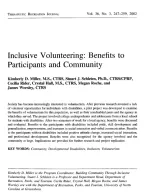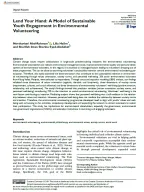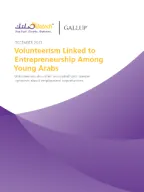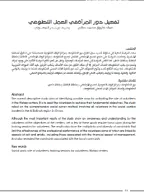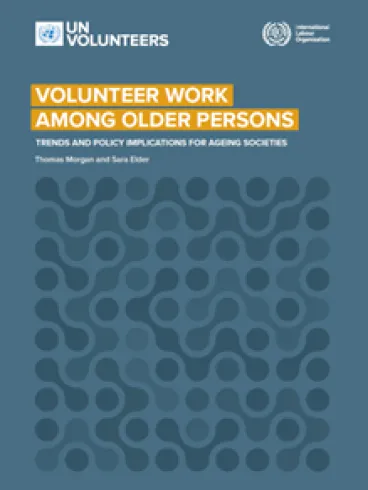
Volunteer work among older persons - Trends and policy implications for ageing societies
Fast read
This research paper released by United Nations Volunteers (UNV) and the International Labour Organization (ILO) discusses the concepts of active and healthy ageing and how volunteerism plays an important role. It explores the demographics of older volunteers, both globally and in snapshots of specific countries, and discusses the policy implications for volunteerism promotion among older persons as a win-win for active ageing.
Synthesis
The world population is rapidly growing older. The projected share of the population aged 65+ is expected to reach 20 per cent by 2070, but this growth is not spread equally across countries. The share of older persons in regions like Eastern Asia is set to grow to well over 40 per cent, while remaining below 20 per cent in sub-Saharan Africa.
The frameworks of active and healthy ageing, as laid out by the World Health Organization (WHO), outline how older persons can be supported to age with dignity and respect. In part this can be accomplished through activities that improve mental, physical and social health. Social participation in volunteering to help other individuals or their community at large can serve as a foundational aspect of active ageing.
Persons who volunteer in old age perform better than non-volunteers in their self-perceived quality of life, mental health and physical health markers. Older volunteers almost always report stronger cognitive performance, improved happiness and reduced negative symptoms associated with loneliness and depression.
Factors suspected to deter volunteerism among older persons include the lack of sufficient household income and related income- and time-poverty, burdens of household duties (felt more by women than men), insufficient social care and physical limitations. An examination of national labour force surveys in Colombia and Indonesia found old-age (65+) volunteers to be more prevalent among men (than women), those with higher levels of education and persons who were still employed. The income- and time-poverty deterrents to volunteerism among older persons was thus partially confirmed, although more data is needed to examine this further.
Governments in ageing societies are increasingly interested in promoting volunteerism among older persons within their policy instruments for active ageing. In a review of 50 countries’ national ageing strategies and plans, two-thirds of strategies were found to mention volunteerism as a tool for active ageing and one-half dedicated at least one full paragraph to the topic.
National examples of measures to promote and incentivize volunteerism among older persons include the development and expansion of infrastructure to match potential older volunteers to organizations and volunteer opportunities, including through digital means. In addition, the extension of specific programmes aimed to promote social cohesion and wellbeing through intergenerational exchanges or cultural and civic participation further support these measures.
Much progress toward integrated active ageing policy frameworks has been made, especially under the umbrella of United Nations and regional frameworks. However, there is still significant room for expansion and improvement at the country level. With volunteerism among older persons known to bring personal and societal benefits, countries are encouraged to increase attention and investment in making it an institutionalized tool within their active ageing policy and implementation frameworks.













